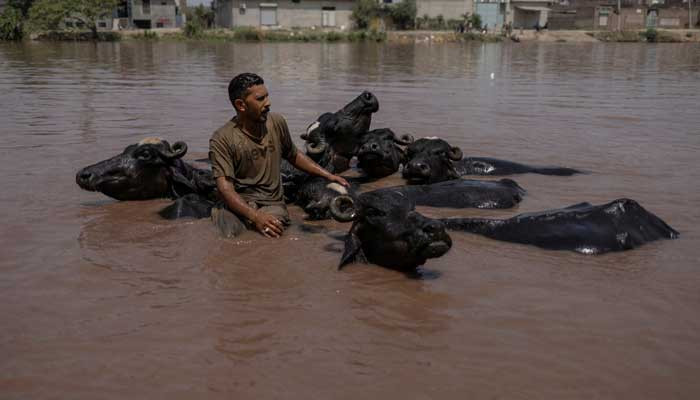Devastating Floods Claim Hundreds of Lives Across the Country
Tragically, at least 299 individuals, including 140 children, have perished, and 715 have sustained injuries due to severe flash floods and heavy rainfall impacting vulnerable regions nationwide since June 26. The National Disaster Management Authority (NDMA) recently released these figures.
The reported fatalities also include 102 men and 57 women, according to the compiled data.
Of the 715 individuals injured, 239 are children, while 204 women and 272 men have suffered injuries.
The intense flash floods and torrential rains have inflicted widespread devastation since June 26, resulting in damage to 1,676 residences throughout the affected areas.
Among these, 562 houses were completely destroyed, while 1,114 sustained partial damage. In addition, the harsh weather conditions led to the loss of 428 livestock, further straining local communities.
The NDMA has executed 223 extensive rescue missions, successfully evacuating 2,880 people from areas impacted by flooding.
To aid affected communities, the agency has provided 13,466 relief supplies in susceptible areas.
These provisions encompass 1,999 tents, 61 ration packages, 958 blankets, 569 quilts, 613 mattresses, 1,282 kitchen kits, 1,163 food parcels, 350 life vests, 1,122 hygiene kits for homes, 2,170 tarpaulins, and 146 de-watering pumps, along with other crucial supplies.
Authorities have established 71 medical camps and have provided treatment to 577 individuals to date.
According to the NDMA, the crisis has impacted numerous regions, and collaborative relief efforts are ongoing with provincial and federal entities.
Heavy rainfall is expected to sweep across Pakistan starting tomorrow (Monday), and weather authorities are cautioning about potential flash floods in low-lying areas as another intense monsoon season begins.
The Pakistan Meteorological Department (PMD) has indicated that a new weather pattern will bring rainfall to a significant portion of the northern and central regions between August 4 and 7.
This new spell of cloudbursts is predicted to affect both Azad Jammu and Kashmir and Gilgit Baltistan, according to weather forecasts.
Furthermore, Khyber Pakhtunkhwa is bracing for the impact of this monsoon system, with strong winds and thunderstorms also expected.
Punjab, which has experienced the most severe impact thus far, along with the federal capital, where continuous rainfall has been occurring, are also anticipated to encounter heavy rainfall during this period.
Further south, Sindh and Balochistan may experience scattered rainfall around August 6.
The Met Office has issued a strong advisory, cautioning that potential flash floods may lead to overflowing streams, obstructed drainage, and inundation in low-lying areas, and local authorities have been urged to take appropriate precautions.
Until now, the rain-heavy systems have mostly affected the northern regions of the country, leaving southern Pakistan unusually dry, but this situation could soon change, according to weather officials.
Starting around August 10, monsoon currents may begin to shift southward, potentially leading to heightened activity in Sindh and surrounding areas by mid-August.
The PMD has also warned that if this pattern continues, the rainfall could extend into late September, going beyond the typical end of the season in the southern belt.
Meteorologists indicate that climate change is causing shifts in weather patterns, and this year’s monsoon may persist until the end of September, instead of the usual mid-September.
Experts have noted that monsoon currents have had limited impact on southern Pakistan so far, with rainfall significantly lower than in previous years.
With more rainfall anticipated in the coming days, disaster management bodies strongly advise citizens to take precautions, particularly in flood-prone or low-lying regions.
Monsoon rains are a normal aspect of South Asia’s climate, crucial for crop irrigation and replenishing water resources.
However, their detrimental effects have worsened in recent years due to rapid urbanization, inadequate drainage infrastructure, and more frequent extreme weather events linked to climate change.



Comments (0)
No comments yet. Be the first to comment!
Leave a Comment